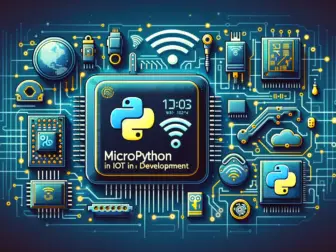Tag - Python for microcontrollers
Exploring the World of Python for Microcontrollers
In recent years, the popularity of microcontrollers has been on the rise, with Python emerging as a favored programming language for these small computing devices. Python’s versatility, ease of use, and extensive libraries make it an excellent choice for developing projects on microcontrollers.
One of the main advantages of using Python for microcontrollers is its simplicity and readability. The language’s clean syntax and high-level constructs make it easy for beginners to pick up and start developing projects quickly. This is particularly advantageous for those new to embedded programming or looking to experiment with microcontrollers for the first time.
Another key benefit of Python for microcontrollers is its vast ecosystem of libraries and frameworks. These resources provide developers with a wide range of tools and functionalities to use in their projects, without the need to reinvent the wheel. Whether you’re working on a simple LED blinking project or a more complex IoT application, there’s likely a Python library available to help you get started.
Additionally, Python’s compatibility with various microcontroller platforms makes it a versatile choice for developers. Whether you’re working with popular boards like Arduino or Raspberry Pi, or more specialized platforms like ESP32 or STM32, Python can be easily adapted to suit your needs. This flexibility allows developers to choose the hardware that best fits their project requirements, without being limited by the programming language.
Furthermore, Python’s dynamic nature and interactive development environment make it ideal for rapid prototyping and iterative development on microcontrollers. With the ability to run code snippets in real-time and make quick adjustments, developers can efficiently test and refine their projects without the need for time-consuming compilation or flashing processes. This iterative approach can significantly speed up the development cycle and enable quicker project iterations.
Despite its many advantages, there are some limitations to using Python for microcontrollers. One of the main drawbacks is the language’s higher memory usage and slower execution speed compared to lower-level languages like C or Assembly. This can be a concern for projects with strict memory or performance requirements, where every byte or clock cycle counts. However, for many hobbyist and educational projects, the ease of use and rapid development capabilities of Python often outweigh these drawbacks.
In conclusion, Python’s versatility, ease of use, extensive libraries, and compatibility with various platforms make it an excellent choice for developing projects on microcontrollers. Whether you’re new to embedded programming or a seasoned developer, exploring Python for microcontrollers can open up a world of possibilities for creating innovative and exciting projects.
